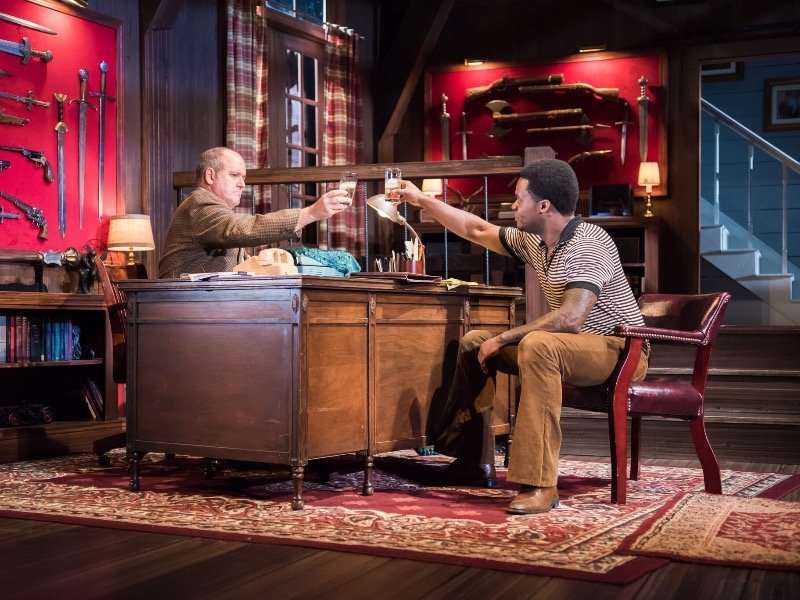Ira Levin knows how to scare the bejesus out of readers.
The author of the novels "Rosemary’s Baby," "A Kiss Before Dying" and "The Stepford Wives," his terrifying novels are filled with satanic possession, ruthless murders and zombie-making brainwashing. But in his play "Deathtrap," Levin proves he also knows how to scare theater audiences – at least once in awhile. In Milwaukee Chamber Theatre’s current production of the meta comedy/thriller, the strong actors at the center of show will make you jump, even if the story itself doesn’t keep you white-knuckled at the edge of your seat for the whole night.
The set up could easily have come from the author’s own nightmares. The main character in "Deathtrap" is a formerly successful playwright who’s hit a career slump, compounded by every scribe’s ultimate demon: writer’s block. He begins the show complaining bitterly about a brilliant new play written by one of his former students, a surefire hit that’s written in his own murder mystery style.
Then an evil thought crosses his mind. In his study, filled with weapons from a medieval mace to axes, knives and guns of every era, the stymied playwright fantasizes about the lengths he might go to off this young upstart and claim the script as his own. From there, this self-consciously theatrical evening spins off into increasingly violent plots that the writer dreams up on the spot, then acts out as if they were part of play. Which it is. Or is it?
As the desperate author, frightened that all his success and good ideas are behind him, Bill Watson carries the show. From casually calculating to downright conniving, the actor shows us his hand enough to follow along with each new plot he concocts, but also conceals enough to keep us in suspense. One minute affable, the next obsessed, Watson keeps us guessing— is he the criminal mastermind? Or the unwitting victim? Will he write the play’s final scene, or be written out by a more devious author?
Di’Monte Henning shines as the veteran playwright’s student, who also keeps the audience guessing as to his plans, his motives and his role in the increasingly terrifying play within a play within a play. Charismatic and self-assured, he’s a great foil for Watson’s aging and insecure author. With brains, brawn, a winning smile and a mind that’s just started conjuring ideas for the next great murder mystery, Henning’s youthful character doesn’t need guns to be threatening – he’s already there. He’s also the one who provides genuine chills and thrills for the audience — so sly you’ll never see them coming.
Three minor characters provide more distraction than suspense or laughs. As the playwright’s nervous wife, Susan Spencer is cardboard thin. David Sapiro’s local yokel lawyer and Mary Kababik’s quirky European psychic also fail to connect. Trapped somewhere between Agatha Christie and farce, their portrayals aren’t large enough to get real laughs and aren’t real enough to get under your skin. Their coda at the play’s end should be hilarious. It’s not.
Director Michael Cotey does all he can to heighten the show’s suspense and humor, aided by some fearsome fight choreography by Christopher Elst and over-the-top sound design by Grover Hollway. Props also go to Chamber Theatre’s resident props master Nikki Kulas for assembling museum cases full of lethal-looking weapons that immediately tell the audience that we’re in for a night filled with murder(s) most foul.
But pacing is a problem for this would-be thriller. There are too many long stretches between surprises, and talking about harrowing plot twists is no substitute for actual plot. There are few things less dramatic than watching a writer write, even on vintage ’70s typewriters that seem quaint in the era of iPhones. When characters comment that they have a problem figuring out the second act, it’s hard not to agree with them.







